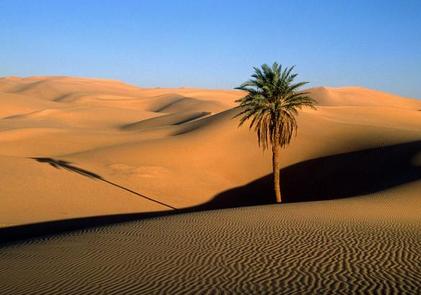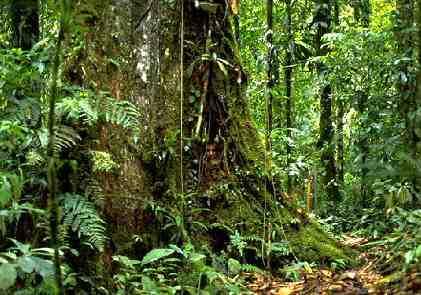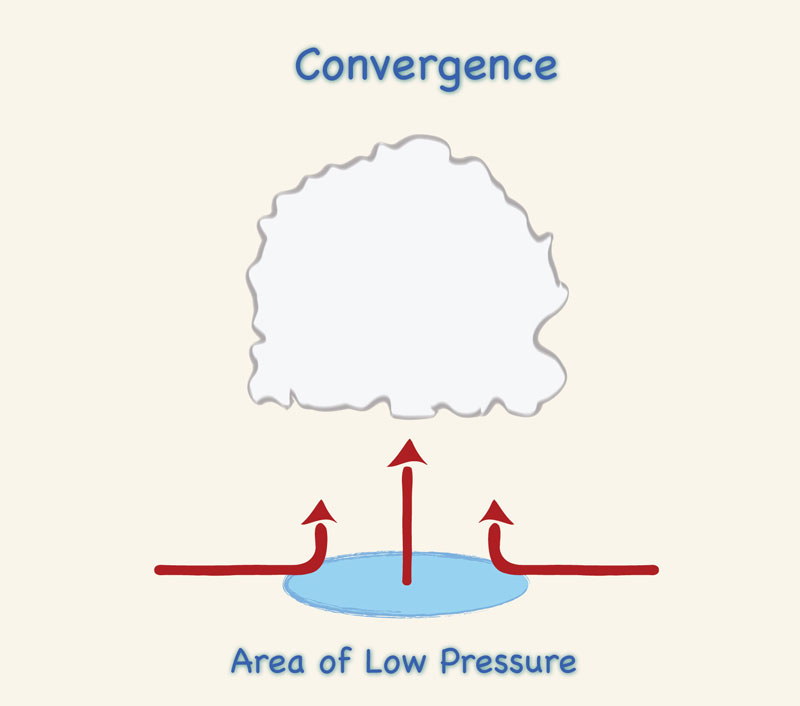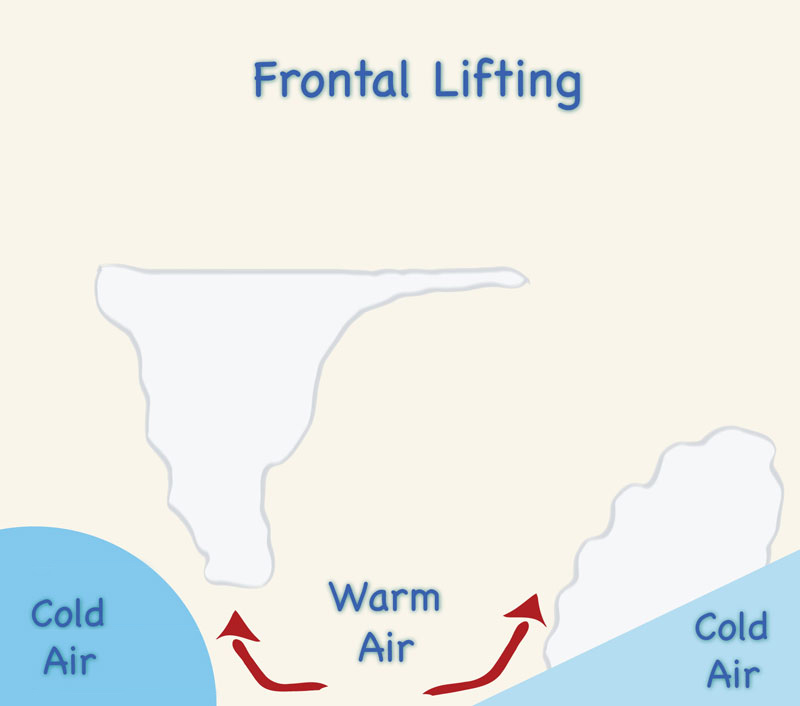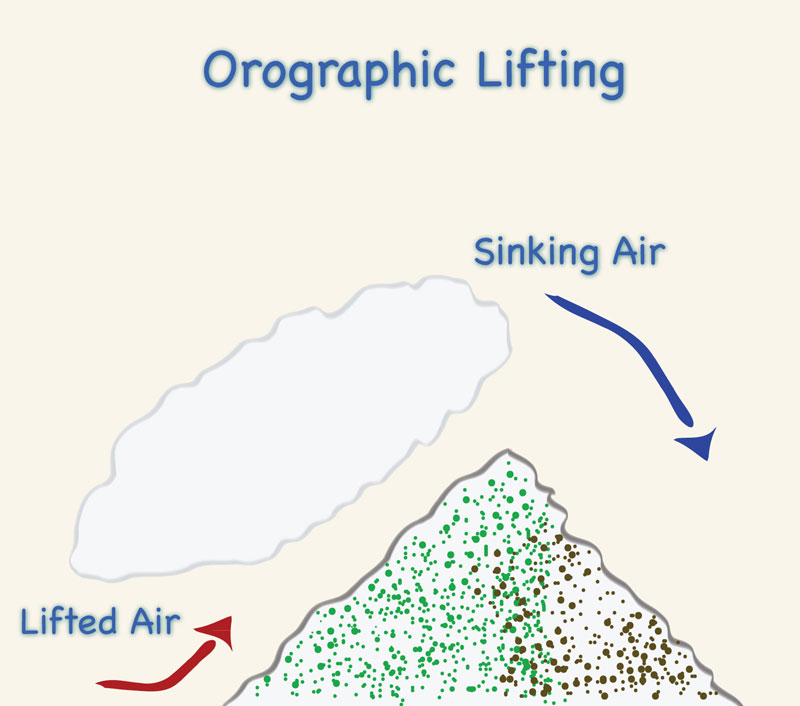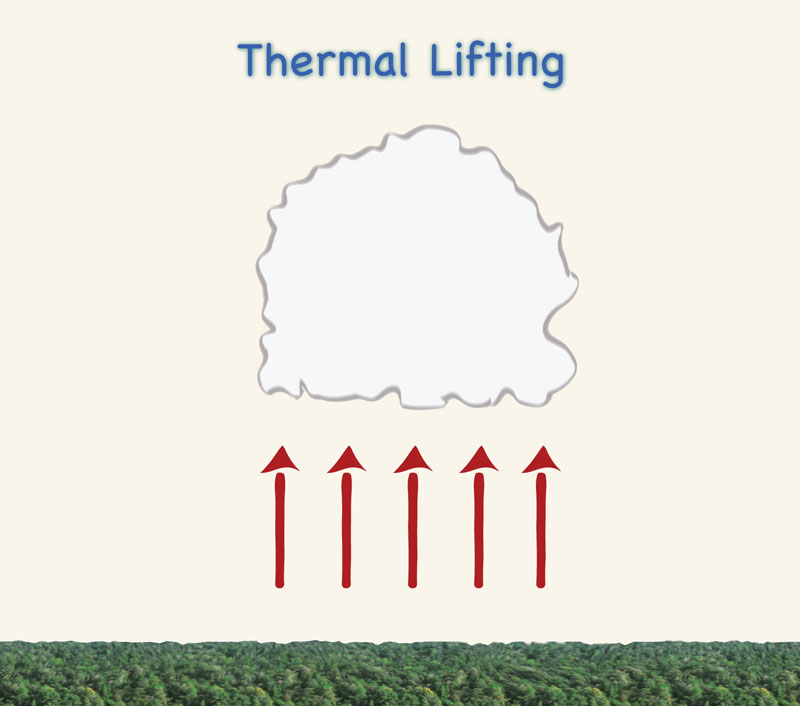|
2008
|
|
♦ The right question
Vegetation consumes a certain amount of water. Plants cannot survive, let alone flourish, without a sizable amount of the precious liquid.
Therefore, the question is appropriate: In a world where water is a scarce resource, is vegetation paying its own way?
In other words, is vegetation producing its own water? This question has practical implications in hydrologic engineering,
watershed and stream restoration, and ecosystem management.
We must first answer the related question: Does vegetation produce water? And, if so, how much?
Does it produce more water than it consumes? If it produces more water than it consumes,
vegetation would be an asset; if not,
it would be a liability. To help settle this issue, in this article we endeavor to explore the relation between land, water, plants, and energy.
♦ Where does water come from?
All fresh water comes from precipitation; however, it does not rain the same amount everywhere.
Regions like the Sahara desert are noted for having so little water than hardly anything can live there.
Others, like the Amazon rainforest, thrive with life of all kinds, featuring the greatest biodiversity on Earth.
Something must make deserts different than rainforests. It may be argued that it rains more in a rainforest; thus, there is more water and
consequently, more vegetation. So the focus shifts to: Why does it rain more in a rainforest?
Or better yet: Why does it rain? Which leads to: How does it rain?
|
Fig. 1 Desert and rainforest landscapes.
♦ How is rain produced?
Rain-producing clouds are sustained by moisture accumulation, condensation, and coalescence. All three processes must be present
for precipitation to occur in significant quantities.
Accumulation means that there has to be a steady source of moisture nearby.
Condensation means the moisture has to condense to liquid form.
Coalescence means that the liquid drops have to acquire enough size and weight to precipitate.
In regions where it rains a lot, all three of these processes are very active.
Conversely, in arid regions, any one of these processes may be lacking, or weak enough to hamper or limit raindrop production.
Atmospheric moisture varies within a narrow range.
In humid regions, atmospheric moisture is 45-50 mm, while in polar and
arid regions it is 2-15 mm.1 Thus, moisture is four to five times greater in humid regions than in arid regions;
yet rainfall can be more than one-hundred times greater.
Therefore, we conclude that moisture availability by itself does not explain the entire phenomena.
Condensation is very important for rain formation. The easiest way for moisture to condense is through cooling, and Nature provides
various ways for moisture-laden air masses to cool down.
That is why there is so much precipitation in the Earth. Global terrestrial averages are approximately 800 mm per
year.2
♦ Cooling of air masses
Cooling of air masses is produced by lifting.
Atmospheric scientists recognize three mechanisms for the cooling of air masses:
(1) lifting as a result of horizontal convergence,
(2) frontal lifting, and
(3) orographic lifting. These three processes have a distinct physical flavor.
Yet there is a little-known fourth process, which is related to the fact that the Earth's surface emits long-wave radiation, or heat.
In many instances, this heat is strong enough to produce lifting of the air masses above it, and consequently, significant amounts of precipitation.
Thus, rain can be produced:
(1) by convergence, particularly in the proximity to a moisture source,
(2) through frontal action,
(3) by air being forced to rise on the windward side of mountains, or
(4) by air being heated from below by long-wave radiation from the Earth's surface.
|
|
|
|
Fig. 2 Lifting by (a) convergence, (b) frontal, (c) orographic, and (d) thermal effects.
Significantly, humans are unable to alter the course of the first three processes. Latitude determines the amount of lifting and precipitation, but it cannot be changed arbitrarily. Proximity to oceans determines moisture availability, but geographical locations are fixed. The presence of nearby mountains determines lifting, but mountains cannot be moved. One the other hand, humans can have a say on the Earth's surface condition and texture. They can change it at will; in fact, they have been doing just that for the past 10,000 years. Changes from forest to range, from range to agriculture, and from agriculture to urban modify the character of the Earth's surface, altering the long-wave radiation balance.
♦ Albedo
In the present context, the all-important parameter is the little-known albedo, which is the coefficient of reflectivity of a surface. Albedo refers to the property of whiteness, and it varies in the range 0-1. A value of 0 represents a black body, absorbing all light and eventually releasing the stored energy by emitting heat. Otherwise, the surface will heat up and burn, and the fact that this has not happened through geologic time must mean that nearly all of the stored the energy is being returned to the atmosphere. Typically the Earth absorbs light energy during daytime and emits heat during nighttime. We mention "nearly all" because a small percentage, seemingly between 0.1 and 0.3%, is stored in natural vegetation by the process of photosynthesis.3 It is remarkable that such a small percentage is sufficient to sustain all the Earth's ecosystems.
A value of albedo equal to 1 represents a mirror, i.e., an all-reflecting surface. White surfaces, such as freshly fallen snow, have albedos in the range 0.75-0.95. The average albedo of the Earth is 0.15 at the surface and 0.34 at the outer levels of the atmosphere.4 The latter value is due to cloud cover; clouds can be of much lighter color than the surface. Now, here is the dichotomy: The albedo of a rainforest is in the range 0.07-0.15, while that of superarid deserts is 0.3-0.6, about four times more. Thus, rainforests will take in more light and release more heat, about four times more on the average, than deserts. Rainforests have an intrinsic means of producing rain by heating the air above. Deserts, on the other hand, lacking sufficient heat from below, are unable to produce lifting, instead producing the opposite effect, subsidence, which hampers rain. That is why deserts are usually cold at night.
♦ Vegetation produces its own rain
Since surface albedo determines to a large extent the amount of rain, and green vegetation has a comparatively low albedo, it follows that vegetation produces its own rain. Now, we know from experience that a potted plant needs to be watered every so often for it to grow and flourish. However, the potted plant was not put there by Nature. Where it has placed vegetation, Nature has done it in a cybernetic, self-sustaining way. An ecosystem following a J-curve would have ceased to exist long ago, like the potted plant would if it is not watered. Instead, natural ecosystems follow a biofeedback process, where the cause and effects replace each other regularly, confounding the physical scientist accustomed to the Cartesian mindset of always x being x, and y being y.
Vegetation brings it own water and pays its own way. The darker green the ecosystem, the more water it produces. Not because the water is there, but because the green is there. Of course, more water means more green, and more green means more water, confirming the non-Cartesian behavior. This explains why a rainforest may have 50 mm of atmospheric moisture and yet could produce more than 5,000 mm of annual rainfall. [To make a point: Cherrapunji, in Meghalaya, Eastern India, by most accounts the wettest spot on Earth, averages 11,270 mm of annual precipitation]. On the other end of the climatic spectrum, superarid regions, with about 15 mm of precipitable moisture, may produce hardly any rain at all. [In Northern Chile's Atacama desert, the driest spot on Earth, annual precipitation is about 25 mm, and in some mid-desert spots, rain has never been observed or recorded]. Thus, the ratio of annual-rain-to-moisture in a superhumid region may be much greater than 100, while a comparable ratio for a superarid region may be close to 1.
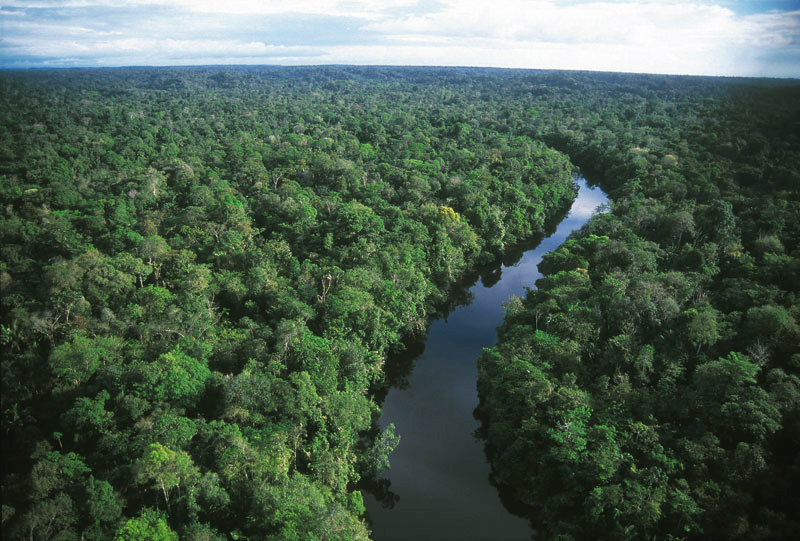
|
Fig. 3 The Amazon rainforest, which produces 1/6 of the fresh water on Earth.5
♦ Albedo and anthropogenia
Of all the factors that contribute to the formation of precipitation, none is more subject to anthropogenic alteration than surface albedo. Generally speaking, a decrease in forest areas will lead to less rain. Belatedly we have realized that we may have caused rain decreases by replacing forests for range, range for agriculture, and agriculture for urban settings. This process, which has been going on for a long time, is self-defeating. If we tamper, or otherwise reduce or eliminate vegetation, we are tampering with the hen that lays the eggs.
A sustainable strategy must be predicated on ecosystem preservation and conservation. Preservation of the remaining forests, coupled with conservation management of the regions that have been subjected to anthropogenic alteration. Returning to pristine conditions is panacea; the best we can do is to stop the process of albedo increases and consequent gradual disappearance of the water resources of the Earth. We reckon that climate change is also possible on a regional context.
♦ Epilogue
The vegetal and animal kingdoms are equal partners, and they have been so since the beginning of time. Vegetation helps produce the water that we use for drinking and bathing, and all other uses. Vegetation does not compete with animals for the water. If that had been Nature's design, the world as we know it would have climbed and fallen prey to a J-curve long time ago. Instead, the cybernetic functioning of the biosphere assures that all components work at unison, complementing each other to assure sustainability. Enlightened societal strategies and public policies must stress preservation and conservation; otherwise, deserts will take over eventually and our precious water resources will all but disappear.
1 World water balance and water resources of the Earth. (1978). USSR Committee for the International Hydrologic Decade, UNESCO, Paris.
2 Ponce, V. M., R. P. Pandey, and S. Ercan. (2000). Characterization of drought across climatic spectrum. Journal of Hydrologic Engineering, American Society of Civil Engineers, Vol. 5, No. 2, April.
3 Hutchinson, G. E. (1970). The Biosphere. Scientific American, Vol. 233, No. 3, September.
4 Ponce, V. M., A, K. Lohani, and P. T. Huston. (1997). Surface albedo and water resources: Hydroclimatological impact of human activities. Journal of Hydrologic Engineering, American Society of Civil Engineers,Vol. 2, No. 4, October.
5 Ponce, V. M. (1992). South American Explorer, Letters, Vol. 31, May.
